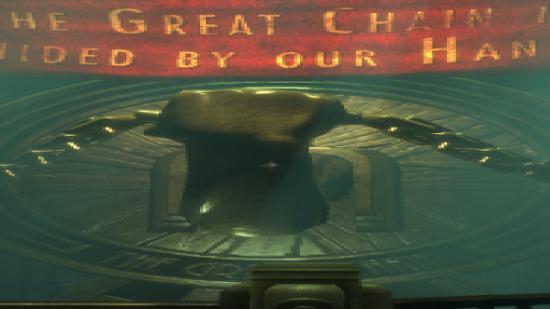It’s been over nine years since Rapture first opened its doors, teaching everyone that you don’t need to be an obnoxious university student to find out what objectivism is all about. Bioshock was part exploration of ideologies taken to the extreme, part shooter where you could set people on fire and smack them with a wrench.
Read more: the very best FPS games on PC that you can play this very moment.
Now it might be a good time to return, or to visit for the first time, as The Bioshock Collection is finally a thing that you can get your hands on, and it’s sporting a fresh coat of paint. But how do the first two games stack up to the originals?
Let’s take the plunge back down to the soggy city of Rapture.
Tested on an Intel i5-3570K @3.40 GHz, 8 GB of RAM, GeForce GTX 970, Windows 10.
Rather than do a regular old PC port review, I’ll also be taking a look at how Bioshock and its sequel (Infinite still look great on PC and thus has not undergone any surgery) compare to the older PC versions. But if you’re also looking for a rundown of the graphics options and an analysis of performance, you’ll find that here too.
Let’s kick things off with the first game, which has had the most work done, seeing as that it’s nine years old.
Bioshock Remastered
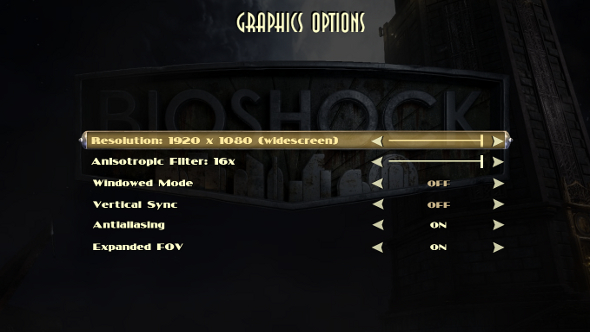
The core game remains largely unchanged, aside from the addition of a welcome commentary and a virtual museum that showcases Easter Eggs, discarded ideas and unused assets. They might offer a good reason to return to Rapture even if you’re already shot and electrocuted your way through it multiple times. But beyond that, this remaster is entirely focused on improving the original’s visuals.
In the graphics settings, Bioshock Remastered actually has fewer options to tweak than its progenitor, though some of this might be down to the fact that the original options are no longer relevant and refer to things that are either on by default or no longer serve a purpose. They are replaced by anti-aliasing, which can be turned on or off, anisotropic filtering and, most importantly, an expanded FOV option which lets you soak up far more of Rapture in a single glance.
The lack of flexibility is still a disappointment. The ability to tweak lighting, shadows and a slider for FOV rather than just an on/off button seem simply logical, and their absence is unusual.
High
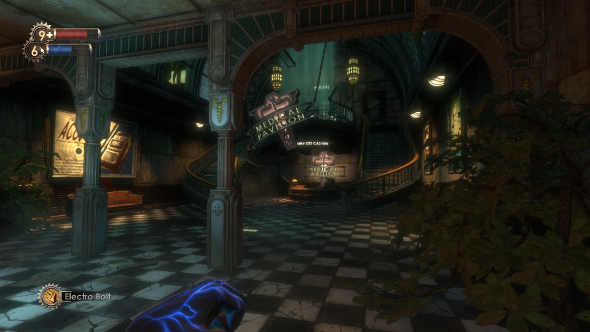
There are no presets, so I’m just using high to refer to everything being turned on. At 1080p I was getting a mostly consistent frame rate of 144fps, though every now and then it would stumble a wee bit, briefly. It’s a prime candidate for 4K if you have an appropriate monitor.
Low
.jpg)
With no options for texture quality, post processing or shadows, there’s very little difference beyond the FOV when you turn everything off. It seems unlikely anyone with a modern rig would need to, either.
Below you’ll find a four screenshots comparing the same scenes between the original and the remastered version. While playing Bioshock Remastered, there were a lot of things I didn’t notice at first. It’s not just a graphics update, but an artistic one as well, with the environment being given extra little touches that bring it to life.
Max settings comparisons
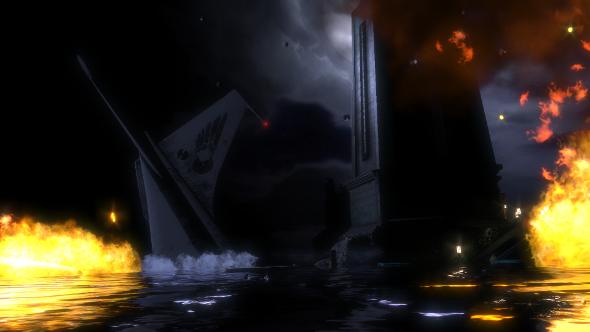
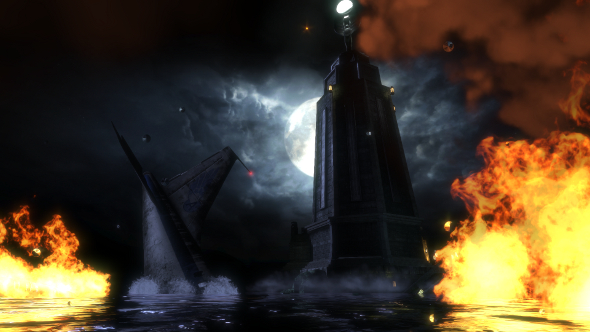
The first scene of the game is greatly improved with the increased FOV, giving you a clear view of both the sinking plane and the entirety of the lighthouse, itself looking lovelier than ever. The skybox has been improved, the moon is clearer, and the colour of the plane has been changed, making it stand out a bit more.
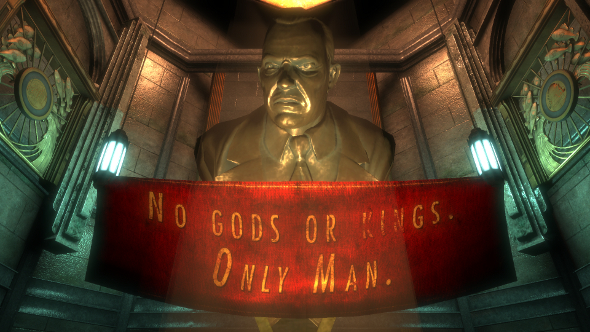
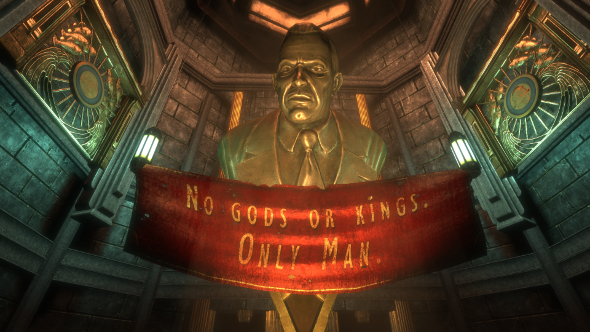
The iconic statue of tyrannical Andrew Ryan continues the theme of not just improving the texture quality, but making artistic changes as well. Note how the banner is torn and considerable more worn and how it hangs more naturally.
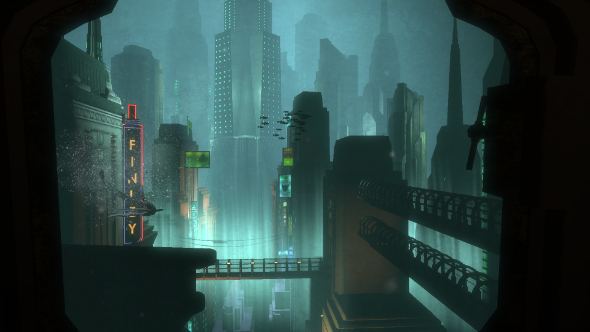
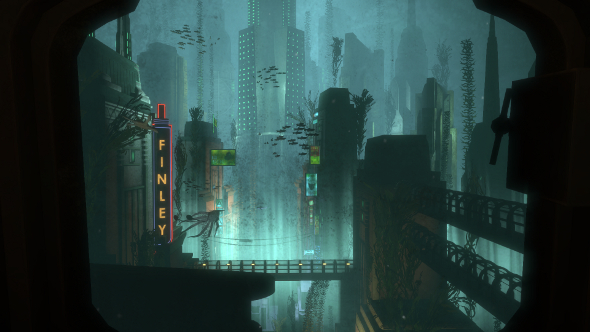
Our first look at Rapture in all its glory has lost some of its impact over the last nine years, but while the distant buildings still look bland and ill-defined, more life has been added to the ocean itself, both in terms of fish and those giant spires of seaweed competing with the skyscrapers. It’s a scene that works better now, as your trip in the bathysphere presents Rapture as this city that’s almost fighting nature, its inhabitants living somewhere they don’t belong.
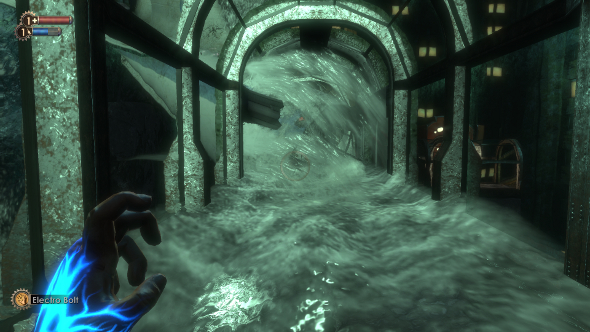
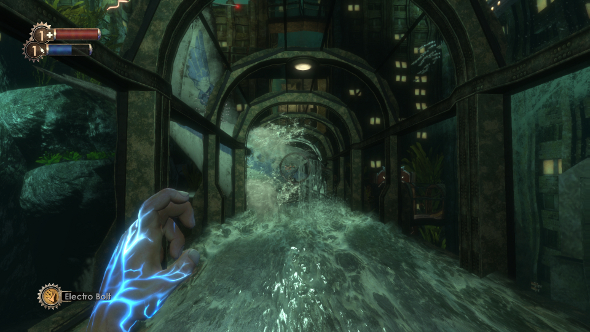
And finally there’s the scene where the section of the crashed plane smashed through the glass corridor, which back in 2007 was quite the spectacle, showing off just how gorgeous Bioshock’s water looked. Even in the original, it remains an impressive sequence, and it’s only been slightly tweaked in Bioshock Remastered.
Unfortunately, there are hints that the PC version received less attention than it should have. There’s the aforementioned lack of options, despite the multitude of visual improvements, and then there’s the issues with mouse acceleration and sensitivity. Tweaking the latter essentially breaks mouse controls entirely, stopping you from using the mouse to navigate menus while replacing contextual prompts with Xbox buttons. Worse: changing it back to the default settings doesn’t fix the problem.
BioShock 2 Remastered
.jpg)
Released in 2010, Bioshock 2 was already quite the visual upgrade on its predecessor, and unfortunately it seems to have been largely deemed ‘good enough’, as Bioshock 2 Remastered enhances it only in ways that are really noticeable when you compare screenshots. Certainly, as I was playing, I really wasn’t able to tell the difference.
Before we get to these screenshots, let’s dig into the options. Don’t worry – it’s not going to take long. The original had a fair amount of options and a series of presets, many of which seem like they’d still be relevant today, but lamentably the Remastered version has even fewer than Bioshock Remastered. Anisotropic filtering up to x16 and anti-aliasing, either on or off. That’s your lot. This means no FOV button or slider, either. The FOV has been slightly increased compared to the original, but not by much.
When it comes to extras, there are none. No challenges, no museum, no commentary and even the original’s interesting but admittedly not particularly popular multiplayer mode has been removed. It’s very much a minimal effort remaster.
High
.jpg)
While Bioshock 2 had graphics presets, Bioshock 2 Remastered doesn’t, not that it would need any given the dearth of options. So for high, I’m just turning anti-aliasing on and cranking up anisotropic filtering to 16. The frame rate bounces between 100 and, without v-sync, 300, and while it is a little less consistent than Bioshock Remastered, when it’s this high it’s not really noticeable.
Low
.jpg)
There are even fewer differences between the highest and lowest settings than there were in Bioshock Remastered thanks to there being no in-game FOV options. In motion, it’s nearly impossible to tell, though in the screenshot above you might be able to notice the slight absence of anti-aliasing.
Let’s see how it compares to the original Bioshock 2.
Max settings comparisons
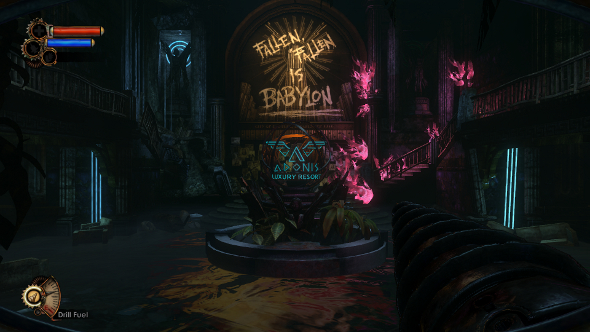
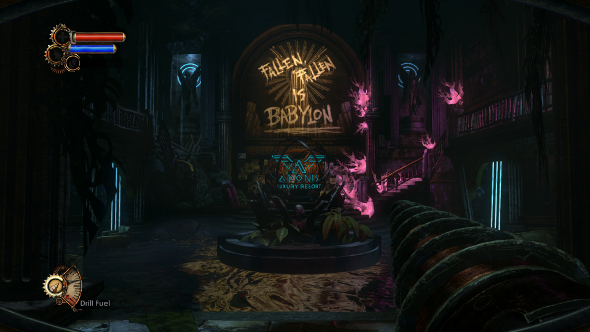
The first room you enter when you wake up is largely unchanged. There’s a light on the right that is turned on in Bioshock 2 Remastered, and you can see – through the murk – that the rock textures are more detailed. The drill also looks more worn and generally better-defined. The biggest difference? I’m standing further in. Sorry about that.
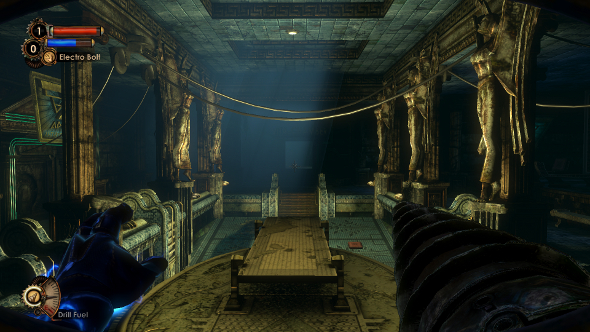
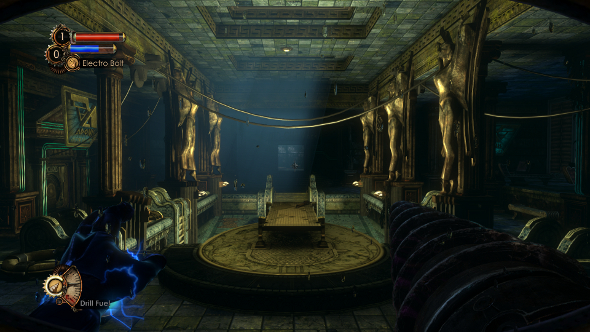
I actually think the textures look a bit uglier in this room in Bioshock 2 Remastered. The pillars and statues in the original image are weathered, stained and cracked, but much of that is lost in the second image.
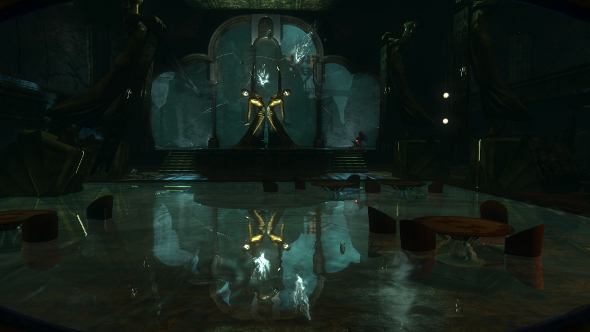
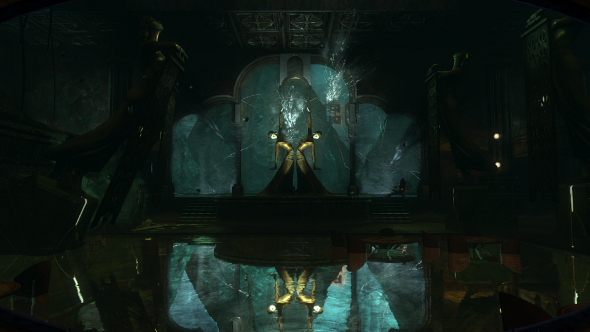
This is one of my favourite scenes from Bioshock 2’s opening chapter, when we’re forced out into the ocean after a Big Sister smashes the gargantuan window we’re unfortunately standing right in front of. The water is slightly more reflective, and the lighting sharper, but this doesn’t really improve on the already impressive moment.
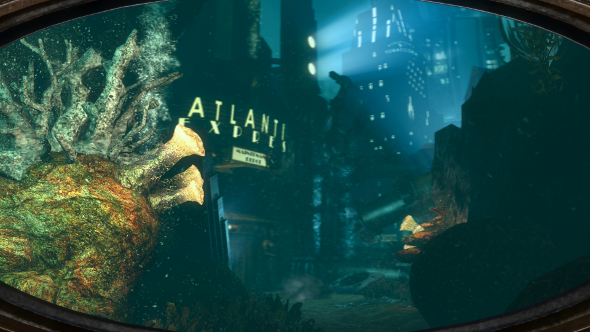
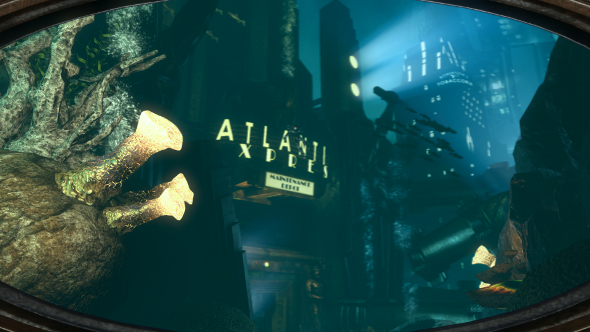
And finally we’re outside, briefly, exploring the seabed. This is another screenshot that I think looks a little better in the original. The rock on the left catches the eye more with its bright colours, and while the textures may have been improved in the remastered version, it has less character. The rest of the scene is largely the same.
The changes are obviously fewer, and arguably leaving some scenes a bit worse off, but Bioshock 2 Remastered is at least absent the control issues found in Bioshock Remastered. Mouse smoothing and acceleration can be turned on or off in-game, while changing the sensitivity does just that, rather than breaking the mouse controls.
Overall, I can’t help but be disappointed. Clearly the visual changes to the first game are great in number and make it not just closer to modern games, but in some cases more striking, aesthetically, than the original. But the complete lack of PC options and the significant control issues really let it down. The sequel merely adds to the disappointment, changing very little, while actually subtracting from the 2010 version.
As remastered games, The Bioshock Collection starts strong and then phones it in a bit when you get to BioShock 2. It’s certainly worth exploring Rapture again to see the first BioShock in a new light, however, but as a port, it’s just not up to scratch. At the very least I recommend waiting until the mouse problems have been patched. And remember, if you own Bioshock, Bioshock 2 and the DLC, Minerva’s Den, you can get these new versions for free. Just check your Steam library.
